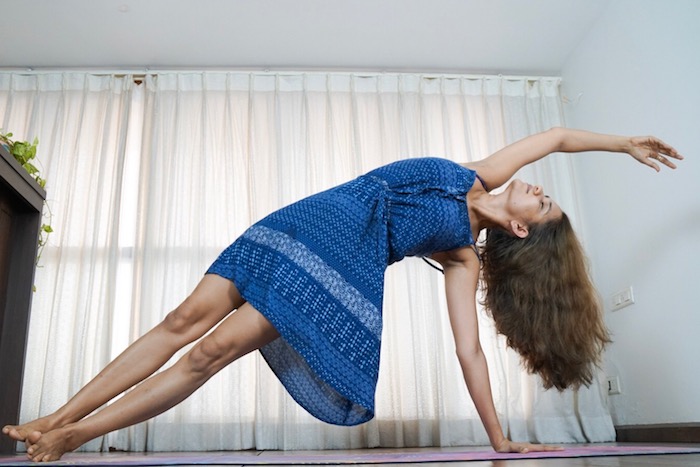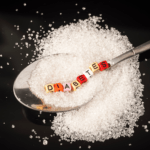If you have a good spine, the gods will chase you. Nobody has psychological or emotional problems, everyone has a bad spine.
There is nothing that goes on in our body without the brain being involved and there is nothing that goes on in the brain without the spine being involved. Together they control all the functions of our body from the very first breath to the very last thought. In fact, the brain-spine axis is the first to develop in a human baby and the rest of ‘us’ simply grows around it. The growth is as much spiritual as it is physical – not only do we rise up against gravity to stand with a straight spine, we also evolve into enlightened beings on the strength of it.
A popular statement attributed to Dr. Sperry says that ‘90% of the stimulation and nutrition to the brain is generated by the movement of the spine’. Spine is the vehicle that drives the brain and it needs to be strong because even though the brain is 2% of our body weight, it consumes 20% of our energy. Hence any malfunction in the spine can lead to inefficient functioning not only in our physical body but also our mind.
As I covered in the previous article, the evolution of our spine helped us unlock our intelligence and similarly the spiritual evolution of our spine is said to unlock the higher consciousness. It essentially gives the human being freedom from the limitations of time, space and gravity. In Yoga, this is achieved by breath, body alignment and focus ~ all three of which heavily rely on the spine. In being stationary as well as in movement, in thought as well as in deed, we are always influencing the spinal cord which is influencing our brain and the biochemical reactions going on inside it including our emotions and actions or therefore our personality.
The physical spine
Physically this brain-body communication is facilitated by 12 pairs of cranial nerves that emerge directly from the brain and 31 pairs of spinal nerves that stem out from the spinal column, pass through the gaps in the vertebrate of our spine and spread out to the rest of our body. These nerves carry messages back and forth to our spine and from there they reach the brain creating the experience of sensation or movement.
This entire communication grid called the Nervous System is split into two divisions – Central and Peripheral. Peripheral nervous system (PNS) collates all information from our body and gives it to the Central Nervous System (CNS) which is the brain and the spinal cord. CNS then processes all information and relays its orders back to PNS for the body to act meaningfully for its survival. PNS is further divided into two as functionally our body performs some voluntary actions (typing, writing, eating, walking) and some involuntary actions (breathing, heartbeat, glands). These are governed by separate sub-divisions called Somatic Nervous System for voluntary actions and Autonomic Nervous System for involuntary (automatic) actions.
Now we come to the most important part as far as yoga is concerned which are two further sub-divisions of Autonomic Nervous system which cover functions like the heartbeat, breathing, glandular secretions etc. These are as follows:
- Sympathetic Nervous System (SNS) – This is responsible for our Fight or Flight response which gets activated when we sense danger or are stressed.
- Parasympathetic Nervous system (PSNS) – This is responsible for our Rest and digest function which takes care of our development, digestion etc. This is when body, nourishes and takes care of itself.
Together these two systems help protect and preserve the body and the caveat is that at any given time only one can be active – so either you can stress or you can heal, you just can’t do both simultaneously. This is the very reason why stress is considered the biggest killer in our modern life. It is the root cause that creates a ripe breeding ground for sickness and ill health by suppressing our resting and healing mechanisms.
This happens because when the sympathetic system is active then body withdraws energy from regular body functions to get us in action to save ourselves from immediate danger. Thus, instead of digestion, repair or growth, the entire energy is instead focused on preparing for the big escape by dilating pupils, increasing heart rate, activating sweat glands and preparing our arms and legs to run or fight. What’s important to understand is that we don’t need to be facing a lion to get the sympathetic system in action – there are many external stimuli in the modern world that keep triggering our stress hormones, it can be a looming deadline, traffic jam, sugar, caffeine, noise, movies, a telephone ring – all contribute to activating the SNS.
Everyone has a certain threshold for stress which varies basis the temperament, lifestyle or genetics; but invariably we always push ourselves to the limits and break the threshold by going beyond our natural capacities, irresponsibly. We mask the body’s need for stress by smoking, drinking, eating, medicating and denying. Sooner or later what’s suppressed will manifest in ways that cannot be ignored. What starts as merely being exhausted or tired or the need to smoke or the craving to grab a beer after a hard day’s work is a form of suppression that starts with a simple thought and ends with a major disease. Very few have mastered the art of true enjoyment without attachment to our means of entertainment.
In the modern city-life we rarely if ever truly relax, our sympathetic system is over active due to chronic stress and unpleasant environment, which means our immunity is down, our digestion is dysfunctional, heart is overworked and hormones are out of order. Today more than ever we need to consciously make time for relaxing and rejuvenating ourselves or in other words for activating the parasympathetic system; which brings more positivity, stronger immunity and healing.
However, like in all things, balance is key and physical balance is called homeostasis. If we only focussed on the rest and digest function we wouldn’t be able to move at all. Sympathetic nervous system helps us be mobile and be excited or feel various emotions. There has to be an equilibrium between rest and movement on a daily basis not in spurts of activity and spurts of laziness. Thus, we need balance between sympathetic and parasympathetic, so how do you bring things to balance?
Dr. Herbert Benson as quoted by Harvard Health Review said that the way to reduce or counter our sympathetic stress response is by ‘deep abdominal breathing, focus on a soothing word (such as peace or calm), visualization of tranquil scenes, repetitive prayer and yoga…’. Although today Yoga has become limited to just asana practice, but every activity mentioned by Dr. Benson is a part of Yoga. Deep breathing, Om chanting, mindfulness, meditation are ways to bring relaxation into our body by activating the PSNS (apparently even yawning is ). To know more on how Yoga bring about this balance click here to read the next article.







